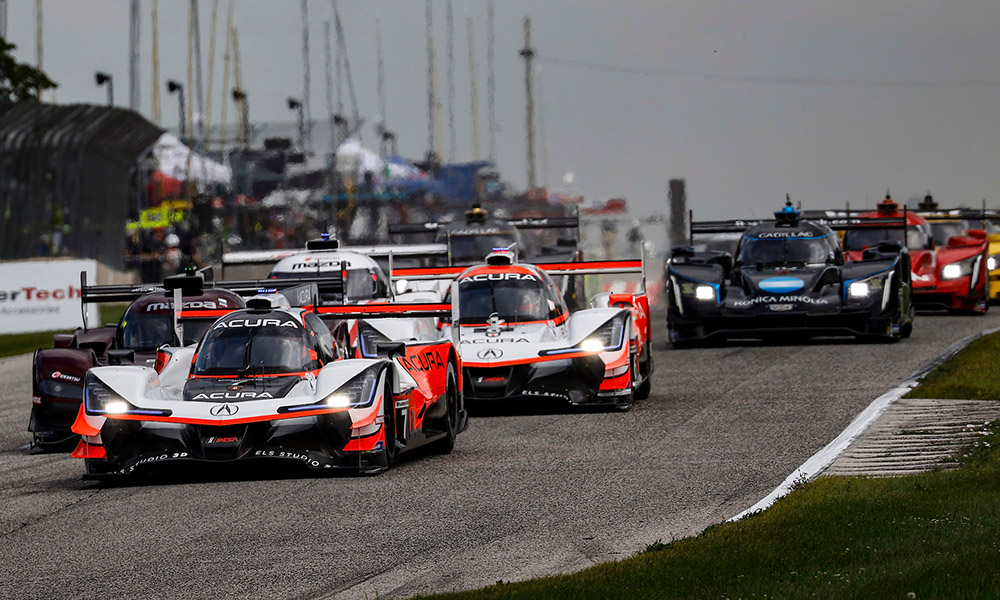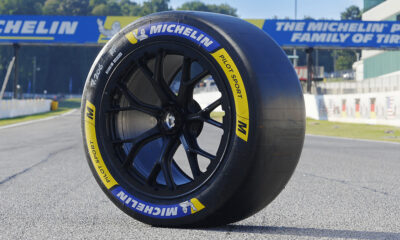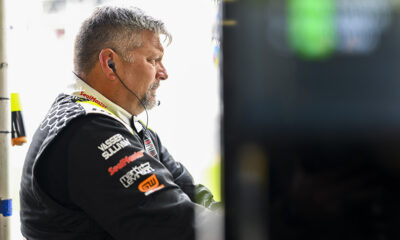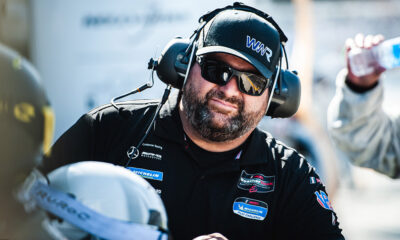
Photo: IMSA
Quick vs. Fast
A multi-time champion race team manager often posed a simple question to prospective team members: “There are two towns, two miles apart with a big hill in the middle. If you average 30 mph going up the hill, how fast do you have to come the hill to average 60 mph?”
Many incorrectly answered 90 mph. The correct answer is that it is impossible. To average 60 mph over two miles, the trip must be completed in two minutes. Traveling one mile at 30 mph takes two minutes.
His point was that the key to going fast was to minimize the time spent going slow.
The Go Faster Approach
Michelin engineers suggest there are two basic approaches to the four-mile-long Road America circuit. Either can be successful. Finding a way to have the best of both is ideal.
Road America has approximately 18,000 feet or 3.4 miles of straightaways compared to 3,400 feet of turns.
With so much of a lap comprised of straightaways, some teams look to trim out every “tick” (thousandths) of downforce to maximize straight line speed.
That approach comes with a price.
The higher straightaway speed can be an advantage in traffic, but to set-up some of those passes, drivers need to be able to get through the turns cleanly and efficiently, especially the turns leading onto those long straightaways.
“If you have reduced downforce to maximize straight line speed, you will, of course, have less downforce through the turns. Over a full stint this could lead to struggles with braking, cornering, and tire wear,” said Hans Emmel, Michelin IMSA series manager.
“When you take downforce off the car, you are increasingly dependent on mechanical grip which comes from the chassis set-up and the tires. This can be tricky to balance and challenging for the drivers to manage.”
The Go Quicker Approach
The second view is that connecting those long straights are some of the most challenging and respected corners in motorsports, Turns 1 and 5, The Carousel, The Kink, Canada Corner, and Billy Mitchell Bend.
Along the way, cars climb five times and descend seven times each lap, a total of 20 stories up and 20 stories down every lap.
The transitions, often at high speed, as cars brake, turn, and accelerate while changing both direction and elevation puts an extreme load on tires.
“Choosing a set up with a bit more downforce to negotiate the corners cleanly and efficiently can provide more consistent braking, cornering, and power down at exit, and that generally results in more consistent lap times, especially over a full stint,” said Emmel.
Michelin Makes Straightaways Longer
When Michelin debuted as the Official Tire of IMSA in 2019, they helped teams find new set-up combinations, enabled by Michelin technologies to provide increased mechanical grip and to deliver performance over full stints.
In effect, Michelin looked to make the Road America straightaways even a bit longer by increasing the level of mechanical grip available through the tires.
Many of the WeatherTech Championship and Michelin Pilot Championship drivers and teams found that they could go a full car length deeper under braking. Plus, at corner exit they could be back on the power a full car length sooner.
Braking later, having efficient cornering power, and accelerating sooner meant a higher corner exit speed. That in turn translated to higher straightaway speeds or reaching terminal velocity sooner.
The result was significantly quicker new qualifying and race lap records.
The DPi pole winning Acura driven by Dane Cameron broke the old lap record by a staggering 3.218 seconds. In GTD, the record fell by 1.343 seconds.
In the first year for the Michelin Pilot Challenge, the GS qualifying record fell by 2.49 seconds and the race lap was lowered by 3.524 seconds. It was a similar story in TCR where the pole lap was 2.036 seconds quicker and the race lap 3.141 second quicker.
Ironically, the GTLM class records, where teams had been racing on Michelin tires all along were lowered by 0.832 seconds and 0.525 second respectively.
“Racers are like all of us, they want everything, and we push to develop tires that deliver what they want. The only things that racers see in purely black and white terms are the numbers on the timing sheet and the checkered flag,” said Emmel.


























